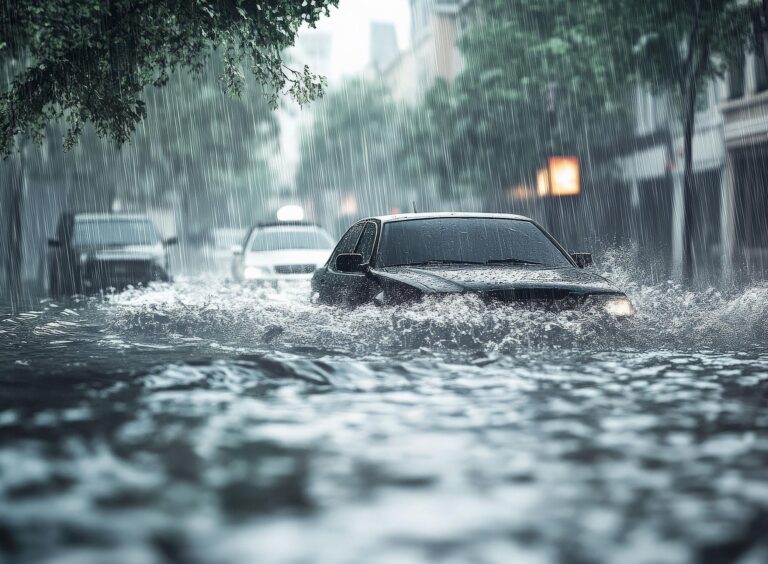Severe weather conditions have swept across parts of Asia, as heavy rainfall ravages India, Japan, and Hong Kong, leading to widespread disruption and impacting millions. Torrential downpours have triggered flooding, landslides, and transportation delays, prompting emergency responses and warnings from local authorities. This multi-region weather event highlights the escalating challenges posed by extreme rainfall patterns amid changing climatic conditions.
Heavy Rainfall Triggers Flooding and Transportation Chaos Across India Japan and Hong Kong
Severe downpours across key regions in India, Japan, and Hong Kong have led to significant flooding, forcing authorities to issue urgent warnings and enact emergency measures. In India, particularly in the states of Maharashtra and Kerala, roads were submerged, homes inundated, and several low-lying areas declared disaster zones. The relentless rain disrupted daily life, causing power outages and halting public transportation, with thousands stranded in vulnerable locations.
Transportation networks have borne the brunt of the weather chaos. Rail services in Japan faced extensive delays and cancellations as tracks flooded, while Hong Kong’s mass transit system grappled with water-logged stations and operational slowdowns. Emergency services continue to work around the clock, prioritizing evacuation and assistance in the hardest hit zones. Key challenges faced include:
- Submerged roads and bridges limiting vehicle access.
- Interrupted flights due to poor visibility and adverse weather.
- Disrupted freight supply chains affecting goods and essentials.
| Region | Rainfall (mm last 24 hrs) | Major Impact | Current Status |
|---|---|---|---|
| Maharashtra, India | 180 | Widespread flooding, power cuts | Relief efforts underway |
| Tokyo, Japan | 160 | Rail cancellations, waterlogged tracks | Partial service resumption |
| Hong Kong | 140 | Mass transit delays, street flooding | Ongoing recovery |
Emergency Services Mobilize as Communities Face Rising Water Levels and Infrastructure Damage
Authorities across affected regions are working relentlessly to coordinate rescue operations and provide immediate aid to thousands of residents displaced by flooded homes and damaged infrastructure. Emergency responders have deployed boats, helicopters, and temporary shelters, prioritizing vulnerable populations including the elderly, children, and those with limited mobility. Power outages and disrupted communication lines have further complicated relief efforts, prompting officials to establish mobile command centers and increase aerial surveillance to assess the most severely impacted zones.
Key emergency measures include:
- Rapid evacuation protocols in flood-prone districts
- Provision of clean drinking water and medical supplies
- Reinforcement of critical infrastructure such as bridges and roads
- Continuous weather monitoring to anticipate further risks
| Region | Evacuated Residents | Temporary Shelters Opened | Rescue Teams Deployed |
|---|---|---|---|
| India (Maharashtra) | 12,000 | 30 | 150 |
| Japan (Kyushu) | 8,500 | 18 | 120 |
| Hong Kong | 4,200 | 10 | 85 |
Experts Urge Enhanced Preparedness and Investment in Resilient Urban Drainage Systems
In light of the recent severe weather patterns that have led to significant flooding and infrastructural damage in India, Japan, and Hong Kong, urban planning experts are calling for urgent action to reinforce city drainage networks. They emphasize that current systems, many of which are decades old, are increasingly unable to cope with the volume and intensity of heavy rainfall driven by accelerating climate change. Enhanced investment in resilient urban drainage infrastructure is vital to prevent catastrophic failures and protect millions of urban residents from the growing threat of flash floods and waterlogging.
Key recommendations from specialists include:
- Integrating advanced flood forecasting technologies with real-time water management systems.
- Upgrading existing drainage channels to accommodate higher flow rates and debris load.
- Promoting green infrastructure approaches such as permeable pavements and urban wetlands.
- Implementing comprehensive maintenance schedules to ensure system reliability during extreme events.
| City | Average Annual Rainfall | Drainage Capacity Status | Proposed Budget Increase (%) |
|---|---|---|---|
| Mumbai, India | 2,200 mm | Critical | 35% |
| Tokyo, Japan | 1,500 mm | Moderate | 25% |
| Hong Kong | 2,400 mm | Critical | 40% |
Concluding Remarks
As heavy rainfall continues to batter regions across India, Japan, and Hong Kong, authorities remain on high alert, working to mitigate the widespread disruptions caused by flooding, landslides, and transportation delays. Residents are advised to stay informed through official channels as weather systems persist, and emergency services brace for further impact in the coming days. The ongoing situation underscores the growing challenges posed by extreme weather events across Asia, with communities and governments alike urged to enhance preparedness and resilience in the face of climate-driven uncertainties.




